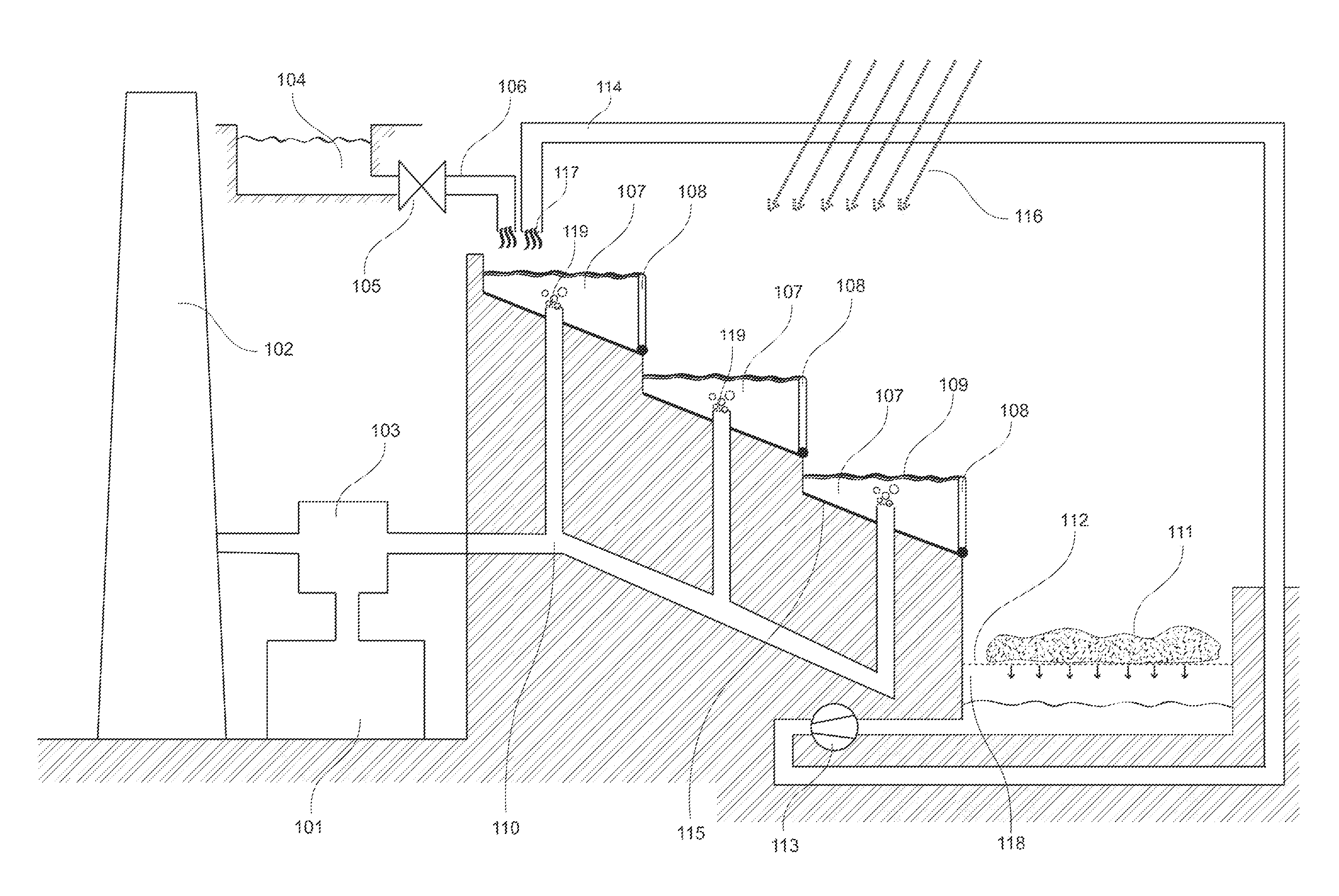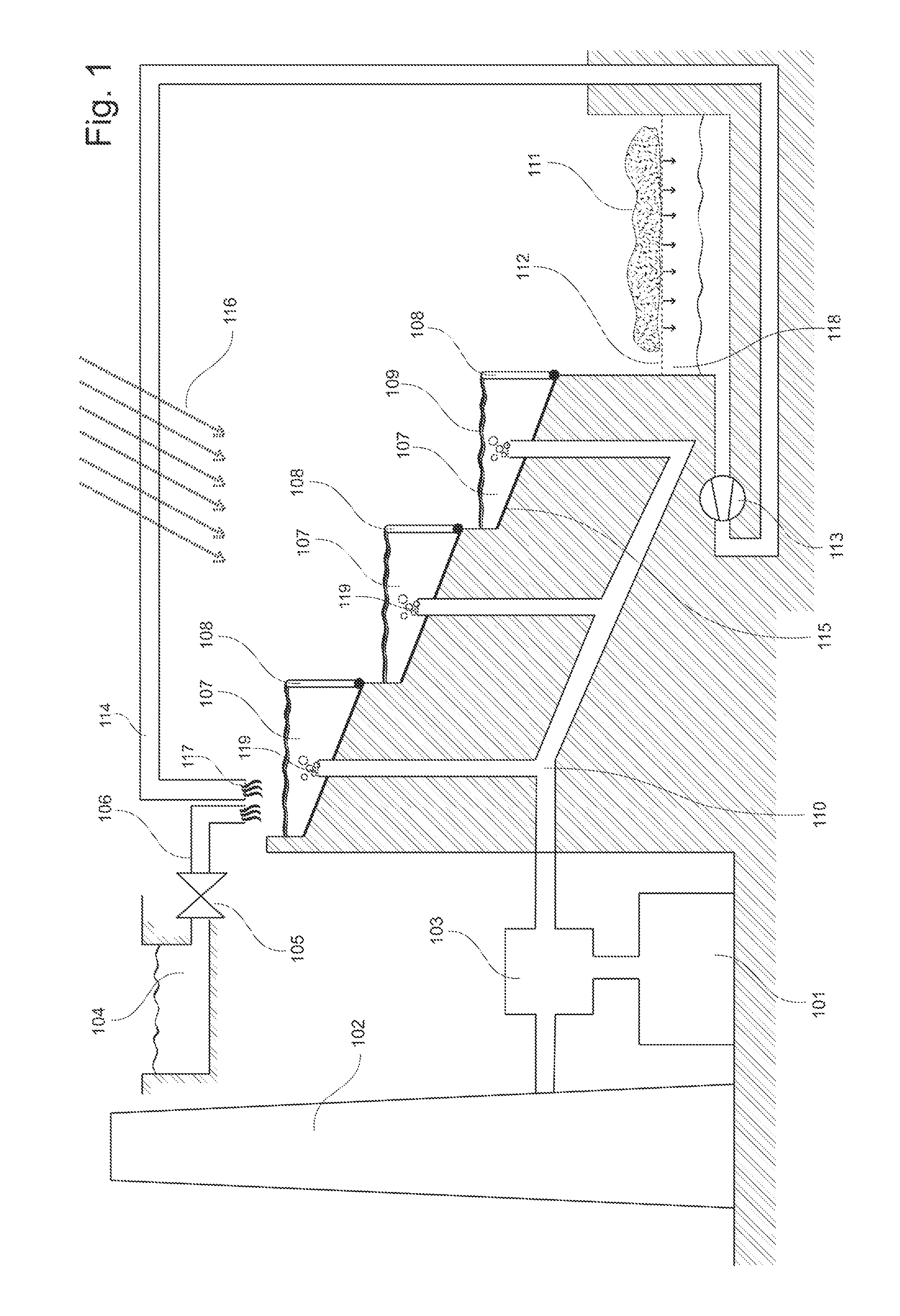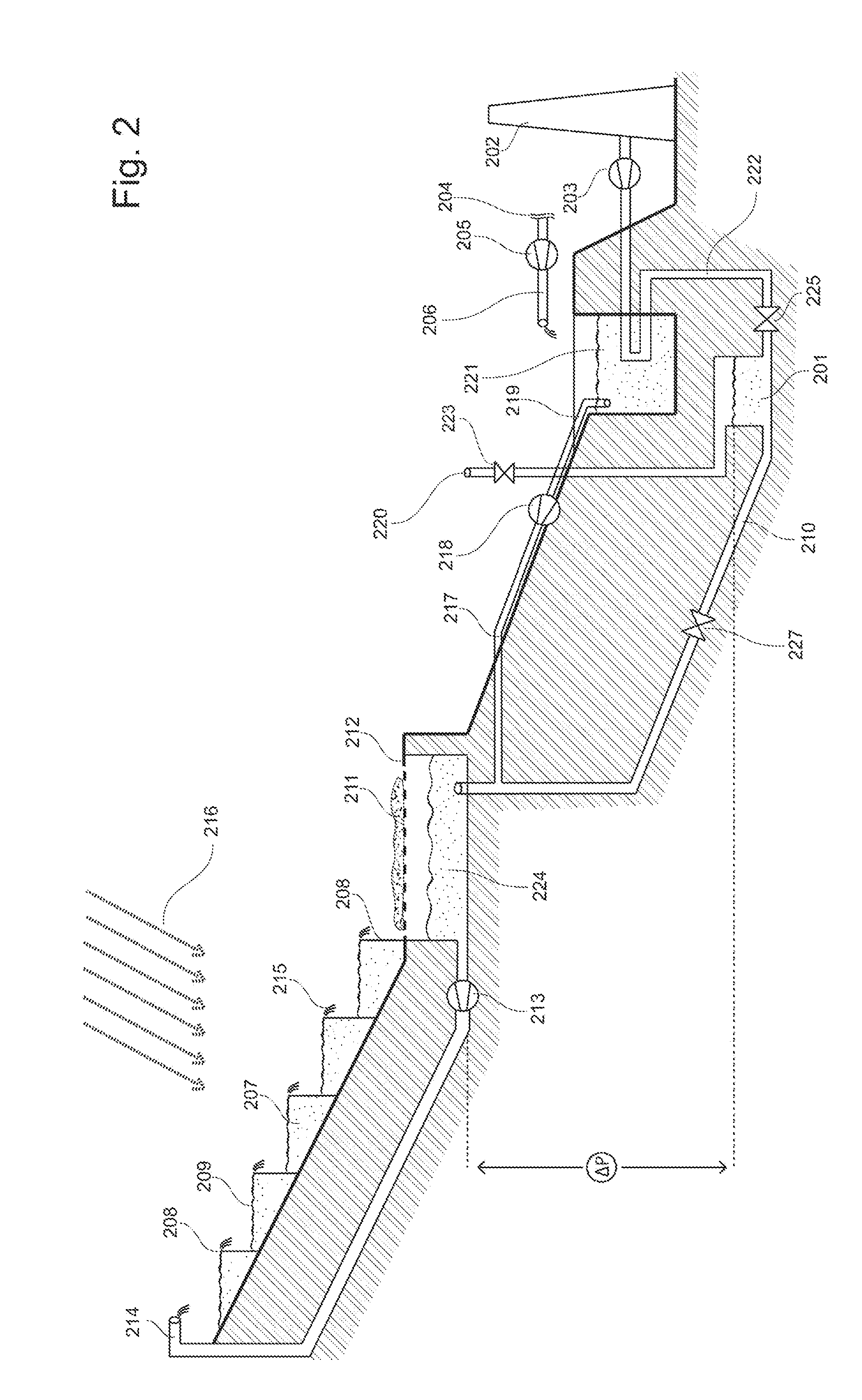Construction material made of algae, method for cultivating algae, and algae cultivation plant
a construction material and algae technology, applied in the field of algae construction materials, can solve the problems of reducing or eliminating the emission of carbon dioxide generated by fossil fuel power plants such as coal, oil or gas power plants, undesirable presence of other algae, and fast growing hair algae, and achieve the effect of facilitating algae growth and reducing carbon dioxide emissions
- Summary
- Abstract
- Description
- Claims
- Application Information
AI Technical Summary
Benefits of technology
Problems solved by technology
Method used
Image
Examples
Embodiment Construction
An exemplary use of filamentous algae for construction is explained with reference to Spirogyra algae, one of many filamentous algae that are suitable for use in construction, as illustrated in FIG. 5a. Spirogyra algae 500 are unbranched with cylindrical cells connected end to end in long green filaments. Cell wall 501 comprises an outer wall of cellulose and an inner wall of pectin. A ribbon shaped, serrated or scalloped, and spirally arranged chloroplast 502 is embedded within cell wall 501. Cell wall 501 further comprises nitrogen, causing spirogyra algae 500 to be self-extinguishing.
As illustrated in cross sectional view FIG. 5b a cavity 503 is formed by cell wall 501 and chloroplast 502. The average diameter 504 of Spirogyra algae 500 is approximately 30 micrometer. When dried, cavity 503 is filled with air. The small diameter 504 of the dried Spirogyra algae 500 reduces the possible convective flow of air within cavity 503, causing Spirogyra algae 500 to act as a natural heat ...
PUM
| Property | Measurement | Unit |
|---|---|---|
| diameter | aaaaa | aaaaa |
| diameter | aaaaa | aaaaa |
| density | aaaaa | aaaaa |
Abstract
Description
Claims
Application Information
 Login to View More
Login to View More - R&D
- Intellectual Property
- Life Sciences
- Materials
- Tech Scout
- Unparalleled Data Quality
- Higher Quality Content
- 60% Fewer Hallucinations
Browse by: Latest US Patents, China's latest patents, Technical Efficacy Thesaurus, Application Domain, Technology Topic, Popular Technical Reports.
© 2025 PatSnap. All rights reserved.Legal|Privacy policy|Modern Slavery Act Transparency Statement|Sitemap|About US| Contact US: help@patsnap.com



